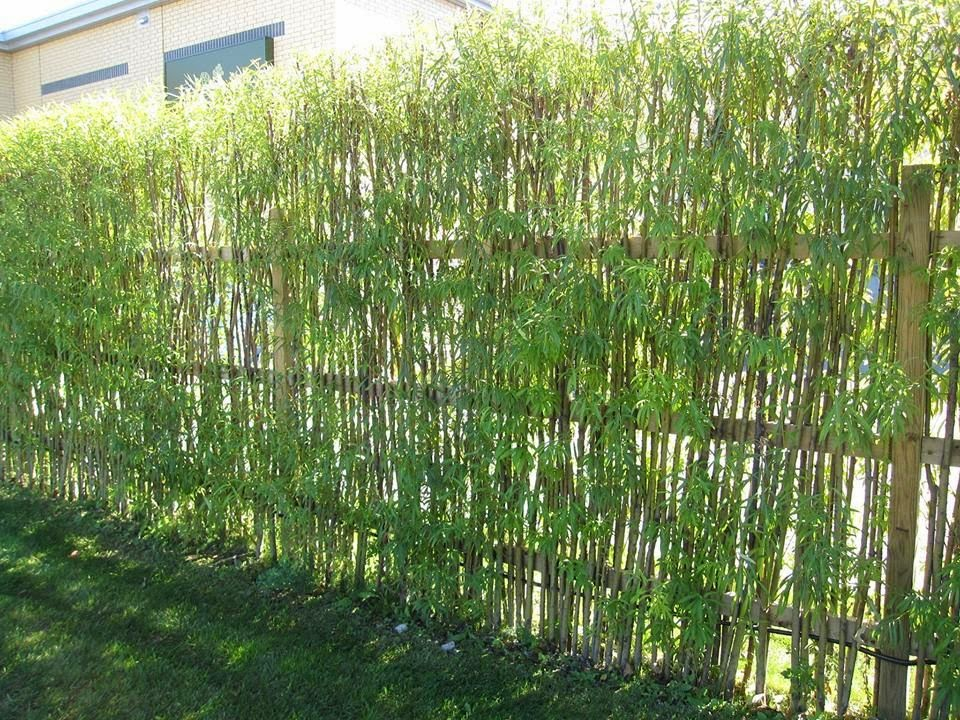Create A Stunning Living Fence: Plant Selection And Maintenance

Table of Contents
Choosing the Right Plants for Your Living Fence
The foundation of a successful living fence lies in selecting the appropriate plants. This decision hinges on several key factors:
Considering Your Climate and Soil
Your region's climate and soil type profoundly influence plant survival and growth. Understanding your hardiness zone, average rainfall, temperature extremes, and soil drainage and pH is paramount. A soil test can provide invaluable insights into your soil's composition, allowing you to amend it if necessary.
- Arid Regions: Consider drought-tolerant plants like Lavender, Rosemary, or Yucca.
- Cold Climates: Opt for frost-hardy species such as Arborvitae, Juniper, or Holly.
- Humid Regions: Choose plants that thrive in moisture but also offer good drainage to prevent root rot. Examples include some varieties of Hydrangea and Spirea.
- Amendments: If your soil is lacking essential nutrients, incorporating compost or other organic matter will improve its structure and fertility.
Selecting Plants Based on Height and Width
Choosing plants that reach your desired height and width is crucial for achieving the look you want. Consider the mature size of each plant, ensuring adequate spacing to prevent overcrowding.
- Fast-Growing Plants: Leyland Cypress and Bamboo offer rapid growth, but require more frequent pruning.
- Slow-Growing Plants: Boxwood and Holly grow more gradually, providing a more refined look with less maintenance over time.
- Spacing: Proper spacing is critical. Overcrowding leads to competition for resources, hindering growth and potentially causing disease. Follow the recommended spacing guidelines for each plant species.
Choosing Plants for Privacy and Aesthetics
Your living fence's purpose might be purely aesthetic or focus on providing privacy. Plant selection should reflect your needs.
- Privacy: Dense, evergreen plants like Leyland Cypress or Arborvitae offer excellent screening.
- Aesthetics: Consider flowering shrubs such as Hydrangeas, Roses, or Viburnum for visual appeal. Think about texture and color variations to create a dynamic and interesting living fence.
- Deciduous vs. Evergreen: Deciduous plants provide seasonal color changes, while evergreens offer year-round screening and structure.
Considering Maintenance Needs
Different plants demand different levels of maintenance. Research plant needs before planting to avoid future disappointments.
- Low-Maintenance Options: Many varieties of shrubs and conifers require minimal pruning and care.
- High-Maintenance Plants: Some flowering plants might need regular fertilization, pruning, and pest control.
- Disease Resistance: Choose disease-resistant varieties to minimize the need for chemical treatments.
Maintaining Your Living Fence for Optimal Growth and Appearance
Proper maintenance ensures a healthy, vibrant living fence.
Regular Watering and Fertilizing
Consistent watering is crucial, especially during the establishment phase and in dry periods. Fertilizing provides essential nutrients for robust growth.
- Watering Techniques: Use drip irrigation or soaker hoses to deliver water efficiently to the roots, avoiding leaf burn.
- Fertilizer Types: Choose a balanced fertilizer suitable for shrubs or trees, following package instructions carefully.
Pruning Techniques for Shape and Size Control
Regular pruning maintains the fence's shape, size, and health.
- Hedging: Regular trimming keeps the fence uniform and dense.
- Shaping: Careful pruning creates specific shapes and designs.
- Thinning: Removing dead or crossing branches improves air circulation and light penetration.
- Seasonal Pruning: Different plants require pruning at different times of the year. Research the specific needs of your chosen species.
Pest and Disease Management
Regular inspection can prevent pest infestations or disease outbreaks.
- Common Pests: Aphids, spider mites, and scale insects can damage plants.
- Common Diseases: Fungal diseases like leaf spot and root rot can weaken or kill plants.
- Pest Control: Employ integrated pest management strategies, starting with natural methods such as introducing beneficial insects. Use chemical pesticides only as a last resort.
Dealing with Damaged or Dead Plants
Prompt action is key to address problems.
- Diagnosis: Identify the cause of damage (disease, pest, environmental stress).
- Removal: Remove damaged plants promptly, taking care not to spread disease.
- Replacement: Replace dead or diseased plants with healthy specimens of the same or compatible species.
Conclusion
Creating a stunning living fence involves thoughtful plant selection tailored to your climate, soil type, and aesthetic goals. Consistent maintenance, including proper watering, fertilizing, pruning, and pest control, ensures your living fence's long-term health and beauty. Remember, a living fence offers more than just privacy; it adds curb appeal, enhances biodiversity, and provides a natural, environmentally friendly barrier. Start planning your own stunning living fence today! Research suitable plants for your area and begin the process of creating your own beautiful, natural barrier. Design a living fence that reflects your style and enhances your property. Create a living fence that will be the envy of your neighborhood!

Featured Posts
-
 Weinbar In Venlo Karl Weinbar Feiert Eroeffnung
May 29, 2025
Weinbar In Venlo Karl Weinbar Feiert Eroeffnung
May 29, 2025 -
 When Will The Stranger Things 5 Teaser Trailer Drop Netflix Update
May 29, 2025
When Will The Stranger Things 5 Teaser Trailer Drop Netflix Update
May 29, 2025 -
 Torgovelna Ugoda S Sh A Ta Velikoyi Britaniyi Povniy Analiz
May 29, 2025
Torgovelna Ugoda S Sh A Ta Velikoyi Britaniyi Povniy Analiz
May 29, 2025 -
 Get Ready To Cry Stranger Things Season 5 Promises Intense Emotional Ride
May 29, 2025
Get Ready To Cry Stranger Things Season 5 Promises Intense Emotional Ride
May 29, 2025 -
 Oxfam Novib De Plicht Van Steden Met Een Oorlogsverleden
May 29, 2025
Oxfam Novib De Plicht Van Steden Met Een Oorlogsverleden
May 29, 2025
